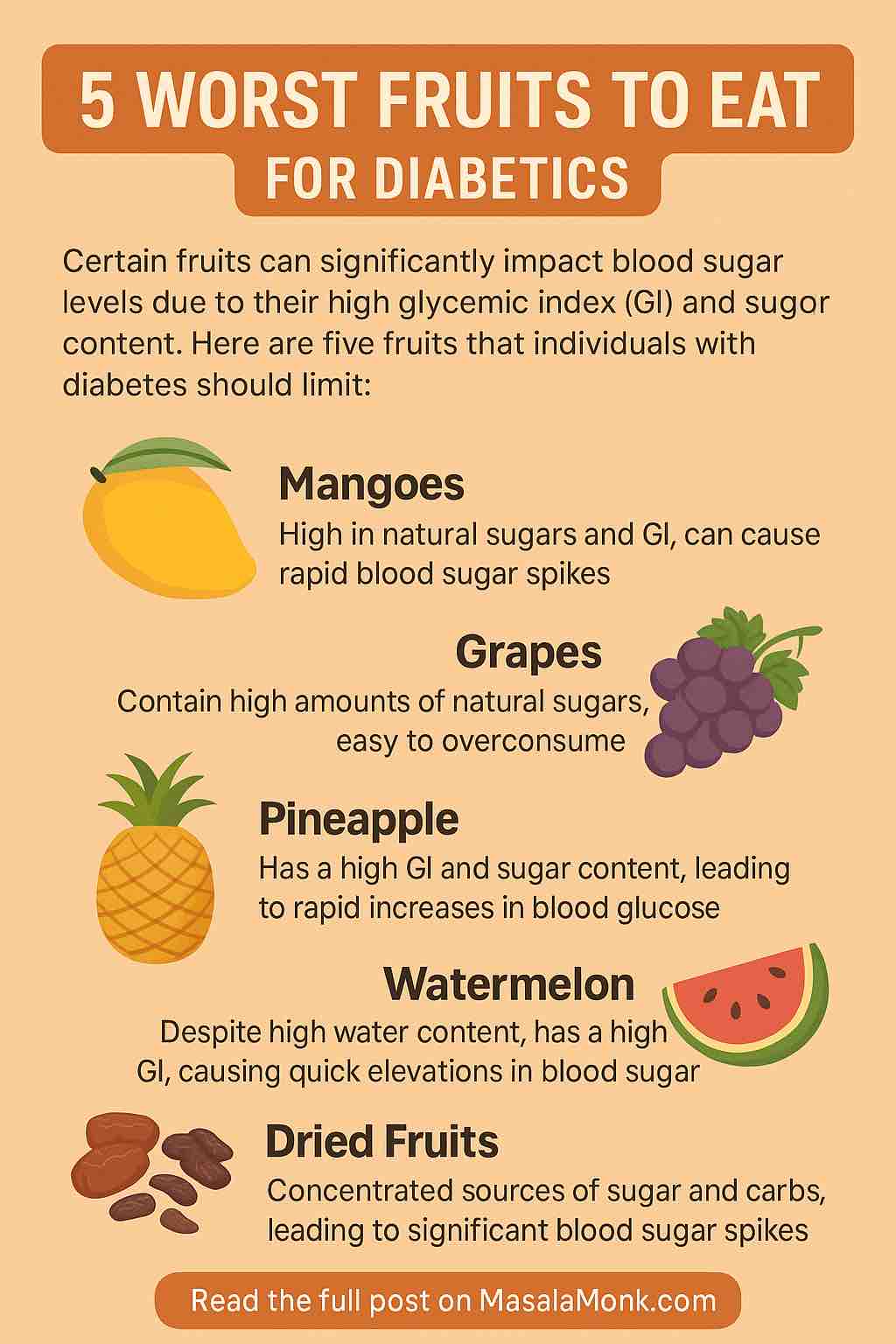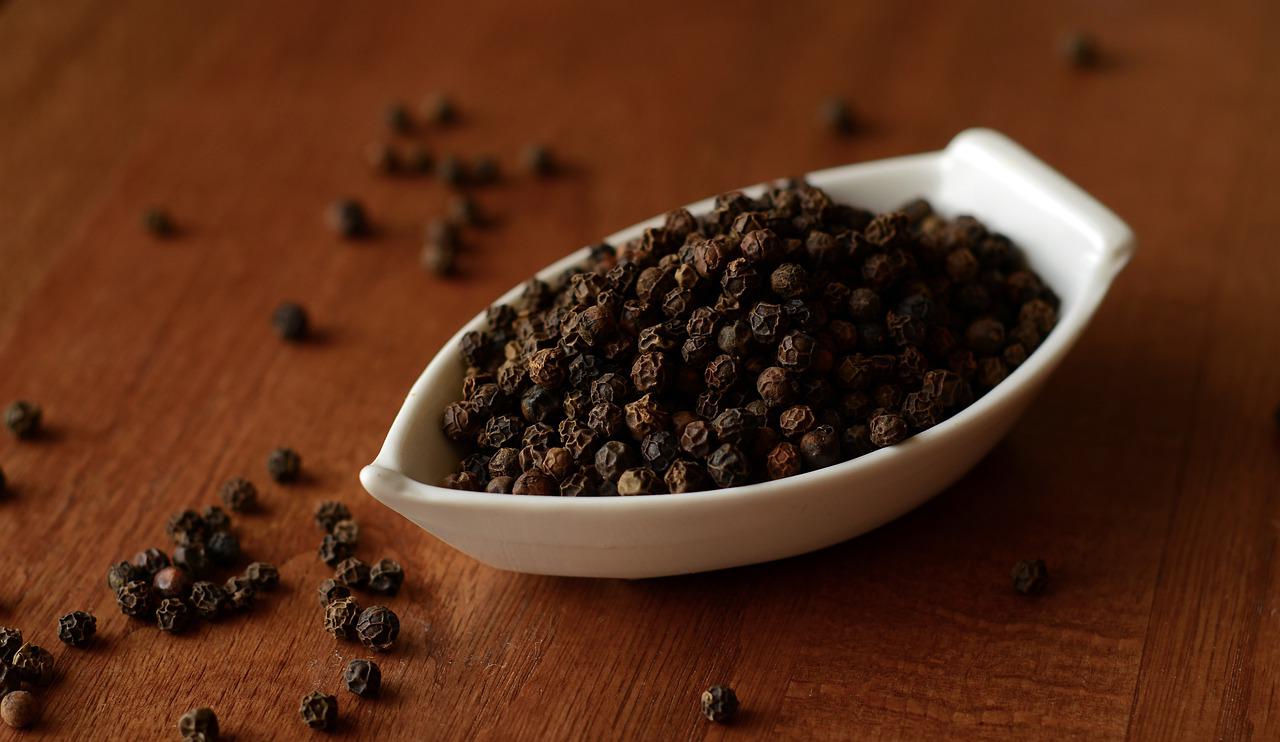
Fruits are often celebrated as nature’s candy—packed with vitamins, fiber, antioxidants, and other nutrients vital for good health. For most people, they’re a cornerstone of a balanced diet. But if you have diabetes, navigating the world of fruits can get tricky.
Why? Because not all fruits affect your blood sugar equally. Some fruits are loaded with natural sugars and have a high glycemic index (GI), meaning they can cause rapid spikes in blood glucose levels. For diabetics, managing blood sugar is essential to avoid complications and maintain overall health.
In this post, we’re going to dive deep into the five worst fruits for diabetics, explain why they can be problematic, and offer tips on how to enjoy fruit safely if you have diabetes. Whether you’re newly diagnosed or looking to refine your diet, this guide will help you make informed choices.
Understanding Diabetes and Fruit: The Basics
Before listing the fruits to watch out for, it’s important to understand how fruits impact blood sugar.
- Natural sugars: Fruits contain fructose, a natural sugar. While natural sugars are better than added sugars, they still affect blood sugar levels.
- Glycemic Index (GI): This is a measure of how fast a food raises blood glucose. High-GI foods cause quick spikes, while low-GI foods raise blood sugar gradually.
- Fiber: Whole fruits contain fiber, which slows sugar absorption and can help regulate blood sugar.
Diabetes management involves balancing these factors to avoid sudden blood sugar surges. The fruits on our list typically have a high GI and sugar content, or are easy to overconsume, making them less ideal choices for diabetics.
1. Mangoes: The Sweet Tropical Temptation
Why Mangoes Can Be a Problem
Mangoes are one of the most delicious and popular fruits globally. But their sweetness comes with a cost for diabetics. They have a high glycemic index, which means they can cause your blood sugar to spike quickly after eating.
Additionally, mangoes are packed with natural sugars—a single mango can contain up to 45 grams of sugar, nearly the daily recommended sugar limit for diabetics.
How to Enjoy Mangoes Safely
- Portion control is key: Instead of a whole mango, enjoy a few slices.
- Pair with protein or healthy fats: Eating mango with nuts or yogurt can slow sugar absorption.
- Choose unripe or less sweet varieties: These have lower sugar content.
2. Grapes: Small Bites, Big Impact
The Hidden Sugar Bomb
Grapes are small and easy to snack on, which is part of their appeal. However, their high sugar concentration makes it easy to consume a lot without realizing it.
A typical serving of grapes contains around 23 grams of sugar, and because grapes are so easy to eat by the handful, it’s common to overconsume.
Tips for Grapes
- Limit servings: Stick to a small handful (about 15 grapes).
- Eat with protein: Cheese or nuts are good companions.
- Monitor blood sugar: Check your levels to see how grapes affect you.
3. Pineapple: The Tropical High-GI Culprit
The Blood Sugar Spike Risk
Pineapple is sweet and juicy but has a high glycemic index ranging from 56-66, making it one of the more blood sugar-spiking fruits. Its sugar content is significant, and the lack of fiber in pineapple juice exacerbates the problem.
How to Manage Pineapple Intake
- Limit portions: Small servings are best.
- Avoid pineapple juice: Stick to fresh pineapple chunks.
- Combine with fiber-rich foods: Add pineapple to salads or eat alongside nuts.
4. Watermelon: Refreshing but Risky
Why Watermelon Can Be Tricky
Watermelon has a very high glycemic index (about 72), which means it can quickly elevate blood sugar. Even though it has a high water content and relatively low carbohydrates per serving, the rapid sugar absorption can be problematic for diabetics.
Strategies for Enjoying Watermelon
- Consume in moderation: Small portions only.
- Pair with protein: Add some cheese or nuts.
- Timing matters: Avoid eating watermelon alone on an empty stomach.
5. Dried Fruits: Concentrated Sugar Powerhouses
The Sugar Concentration Problem
Dried fruits like dates, raisins, and dried apricots have had all their water removed, concentrating the sugars and carbohydrates into a tiny serving size. This makes it easy to consume a lot of sugar quickly.
For example, a small handful of raisins can contain 29 grams of sugar!
How to Handle Dried Fruits
- Avoid added sugars: Always check labels.
- Use sparingly: Treat dried fruits as occasional treats, not daily snacks.
- Pair with protein or fiber: This can help blunt blood sugar spikes.
General Tips for Fruit Consumption if You Have Diabetes
- Focus on Low-GI Fruits: Berries, cherries, apples, and pears typically have a lower glycemic impact.
- Monitor Your Blood Sugar: Keep track of how different fruits affect your glucose levels to personalize your diet.
- Prefer Whole Fruits Over Juices: Juices lack fiber and cause quicker blood sugar spikes.
- Watch Portions: Even “safe” fruits can raise blood sugar if eaten in large quantities.
- Pair Fruits with Protein or Healthy Fats: This combination slows sugar absorption.
Final Thoughts: Fruit and Diabetes—It’s About Balance
Fruits are an important part of a healthy diet, even for diabetics. But choosing the right fruits and eating them wisely is crucial. The five fruits listed here—mangoes, grapes, pineapple, watermelon, and dried fruits—are best limited or avoided due to their high sugar content and glycemic impact.
Always consult your healthcare provider or a registered dietitian to create a fruit plan tailored to your unique needs and preferences.
Remember: diabetes management is a journey. With the right knowledge and habits, you can still enjoy the natural sweetness of fruits without compromising your health.
FAQs: 5 Worst Fruits to Eat for Diabetics
1. Why should diabetics avoid high glycemic index fruits?
High glycemic index (GI) fruits cause rapid spikes in blood sugar levels, which can be difficult for diabetics to manage. Maintaining stable blood sugar is essential to prevent complications, so low-GI fruits are generally safer choices.
2. Are all fruits bad for diabetics?
No, not all fruits are bad. Many fruits, especially those with low to moderate GI and high fiber like berries, apples, and pears, can be part of a balanced diabetic diet when consumed in appropriate portions.
3. Can diabetics eat mangoes at all?
Yes, but in very limited quantities and preferably paired with protein or fats to slow sugar absorption. Portion control is key since mangoes are high in natural sugars.
4. What makes dried fruits problematic for diabetics?
Dried fruits have most of their water removed, which concentrates their sugars and carbohydrates into a small serving. This makes it easy to consume a large amount of sugar quickly, causing blood sugar spikes.
5. Is watermelon really bad for diabetics despite being mostly water?
Yes, watermelon has a high glycemic index, which means it can quickly raise blood sugar. Its high water content doesn’t prevent rapid sugar absorption, so diabetics should consume it in moderation.
6. How can diabetics enjoy fruits without causing blood sugar spikes?
Eating fruits in moderation, pairing them with proteins or healthy fats, choosing low-GI fruits, and monitoring blood sugar levels after consumption can help enjoy fruits safely.
7. Why should diabetics avoid fruit juices?
Fruit juices lack fiber and are quickly absorbed into the bloodstream, causing rapid spikes in blood sugar. Whole fruits provide fiber that helps slow down sugar absorption.
8. Are there fruits that are actually beneficial for diabetics?
Yes, fruits like berries, cherries, apples, pears, and oranges have lower glycemic indexes and high fiber content, making them good options for diabetics when eaten in controlled portions.
9. How important is portion control when eating fruit with diabetes?
Portion control is very important. Even low-GI fruits can raise blood sugar if eaten in large amounts. Measuring servings helps keep carbohydrate intake in check.
10. Should diabetics consult a dietitian regarding fruit intake?
Absolutely. A registered dietitian can help create a personalized eating plan that incorporates fruits in a way that fits individual health goals and blood sugar management.













